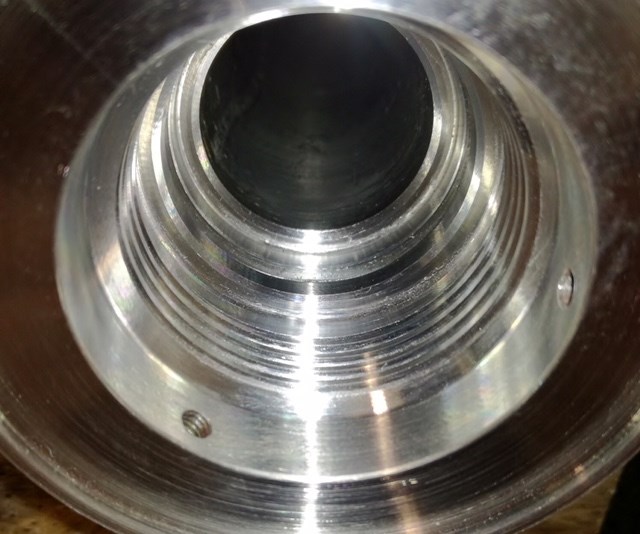Manufacturer Seizes onto Selective Copper Plating
CW needed to selectively plate a thin layer of copper for anti-galling purposes onto the threads of newly manufactured stainless-steel components.
When two stainless steel parts are in direct contact with one another, the constant friction can result in galling of the metal. Just ask Cutting and Wear Limited (CW), an international supplier of downhole tool technology to equipment manufacturers worldwide.
CW needed to selectively plate a thin layer of copper for anti-galling purposes onto the threads of newly manufactured stainless-steel components while also meeting their customer specifications.
CW manufactures flow exit cylinders for the oil and gas industry. They are made out of UNS S17400 H900, a chromium-copper, precipitation-hardening stainless steel that is used for applications requiring high strength and corrosion resistance. Due to the base metal material, the threaded connection of the cylinder is threatened by galling, corrosion and leakage. Adding to the difficulty, the ends of the cylinders are often treated with a delicate zintec coating, which can be easily damaged.
CW investigated multiple options to provide the lubricity and anti-galling properties they required. Unfortunately, both options posed too big of a risk to the part and the existing zintec coating. Barrel plating was discarded because of the component’sfragility. Tank planting was rejected because the cylinder components would need to be heavily masked to protect zintec-coated ends. Also, tank plating was not financially viable due to the small quantity that need plating.
The answer came in the form of selective plating, which is a portable method used to enhance, repair and refurbish localized areas on manufactured components without the use of an immersion tank. As only a small deposit of copper was needed to provide the lubricity and anti-galling required, and with a lowvolume of components, selective plating was chosen as the ideal procedure.By using isolated masking techniques and a power pack, technicians were able to plate within drawing tolerances without the need for post-machining.
CW worked with Sifco Applied Surface Concepts on the project. Prior to the copper application, the parts were carefully masked to protect the zintec coating. Selective plating requires movement of the anode, part or both. For this application, the cylinders were placed in a turning head (or lathe), while the operator held the anode stationary, ensuring good flow to the anode for quality deposits on the deep threads. The initial pre-plate procedures were electroclean, activator No. 4, activator No. 1, and nickel special for bonding. Copper was then deposited onto the deep threads, allowing for the right amount of lubricity and anti-galling on the mating parts.
By using selective plating, CW was able to plate a limited quantity of components in less than half the time it would have taken for tank plating, and at less cost. Sifco ASC now plates these cylinders on a regular basis for them.
Related Content
-
How to Choose Between Sulfate and Chloride-Based Trivalent Chromium
There are several factors to consider when choosing between sulfate and chloride-based baths for trivalent chromium plating. Mark Schario of Columbia Chemical discusses the differences and what platers should keep in mind when evaluating options.
-
3 Tests to Ensure Parts are Clean Prior to Plating
Making sure that all of the pre-processing fluids are removed prior to plating is not as simple as it seems. Rich Held of Haviland Products outlines three tests that can help verify that your parts are clean.
-
Trivalent Chrome Overview
As the finishing industry begins to move away from the use of hexavalent chromium to trivalent chromium, what factors should finishers consider as they make new investments? Mark Schario, chief technology officer for Columbia Chemical offers a helpful overview of this complicated topic.

















